1. Sweet varieties of sea buckthorn
2. Low-growing varieties of sea buckthorn
3. Varieties of sea buckthorn without thorns and thorns
4. Varieties of large-fruited sea buckthorn
5. Varieties of sea buckthorn for the Moscow region
6. Sea buckthorn varieties for the Urals and Siberia
Sea buckthorn is popularly called the golden tree for its beautiful appearance when the fruits ripen and the wonderful healing properties of its sunny berries.Today, a wide variety of sea buckthorn varieties have been developed to suit every taste. When purchasing seedlings, it is better to choose forms of sea buckthorn that are zoned for planting in your region.
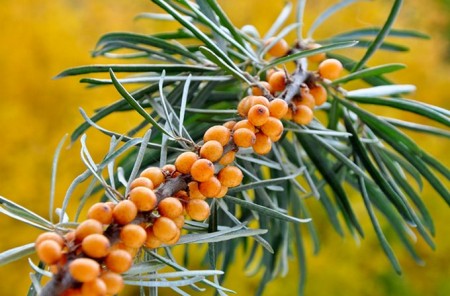
Sex differences in sea buckthorn appear in the third or fourth year of growth during the formation of flower (generative) buds. Sea buckthorn - the “boy” is distinguished by large cone-like buds with 7-8 covering scales, while the “girl” has small buds with two scales, reminiscent of the back of a bug.
It is better to purchase sea buckthorn seedlings grown from cuttings. Such plants inherit the sex and variety of the mother tree. When purchasing from nurseries, you receive seedlings of the type and gender you need. You can also take cuttings from varietal plants yourself and grow seedlings. Reproduction by seeds and shoots usually does not bring the desired results.
Spring is the best time to plant sea buckthorn. You need to choose a sunny, spacious place with light neutral soil without stagnant moisture. If you follow the rules of agricultural technology and choose a good variety of sea buckthorn, you will provide yourself with tasty and healing berries for a long time.
Sweet varieties of sea buckthorn
"Darling"
The fruits of sea buckthorn “Lyubimaya” are intense orange, large with a strong skin. The pulp has a pronounced sweetness (sugar content 7.3%). Bushes of moderate height with straight, thorny branches.High winter hardiness, slightly affected by diseases and pests. The fruits ripen by the end of August. Harvests are abundant and annual. The long stalk and dry separation of the berries make harvesting much easier. “Lubimaya” is good fresh and for making juice; it does not lose its taste when frozen.
• Fruit weight 0.7 g.
• Yield 8 kg per bush
• Mid-season
Advantages: sweet taste of fruits, dry separation of berries, good transportability
Flaws: the presence of thorns on the shoots
"Altai"
"Altai" is remarkable for its fruits with a high sugar content (9.7%). The pulp is sweet and juicy. The plant is of medium height (3-4 m) with a dense but compact crown. The branches are almost without thorns. It tolerates severe frosts well and is resistant to diseases and pests. The fruits are oval, bright orange in color with a dry detachment. Ripening time is early September, used fresh and for processing.
• Fruit weight 0.7 - 0.9 g.
• Harvest 7 - 8 kg. from the bush
• Mid-season
Advantages: sweet berries with pineapple aroma, thornless shoots, dry fruit detachment
Flaws: average yield, demanding watering
"Pearl"
“Zhemchuzhnitsa” is also one of the sweet dessert varieties. The fruits of this species are bright orange in color on a long stalk (5-6 mm). The pulp is sweet with a delicate aroma (sugar content up to 8%). The sea buckthorn bush is low (up to 2.5 m), compact, branches with sparse thorns. A variety with excellent frost resistance, it begins to bear fruit already in the third year. In mid-August, a harvest of 10-12 kg per bush ripens. Resistance to diseases and pests is good.
• Fruit weight 0.7 - 0.8 g.
• Harvest 10 - 12 kg. from the bush
• Ripening period – early
Advantages: aromatic sweet fruits, weak thorniness, excellent frost resistance, early fruiting
Flaws: low drought resistance
"Elizabeth"
Dessert type with delicious sweet and sour fruits (sugar content 7-8.9%). A small bush with a crown of moderate density. “Elizabeth” tolerates frost well and is slightly susceptible to disease. The young plant begins to bear fruit in its fourth year. The fruits are large, cylindrical, orange in color. The 5-6 mm long stalks and semi-dry detachment make harvesting easier. The variety has good yield.
• Fruit weight 0.9 - 1.1 g.
• Harvest 14 -15 kg. from the bush
• Late ripening
Advantages: large sweet berries, weak thorny branches, good yield.
Flaws: late maturation
Low-growing varieties of sea buckthorn
In low-growing varieties of sea buckthorn, the height of the bush does not exceed 2-2.5 m, which greatly facilitates harvesting and caring for the plant.
"Galerite"
Low bush up to 2 m, compact crown with short shoots. The fruits are conical, elongated, light orange with a reddish base, large (0.8 g). The pulp is juicy, sweet and sour with a hint of bitterness. The variety is resistant to major diseases. Sea buckthorn ripens in mid-September. The harvest from a bush can be 10 kg.
• Fruit weight 0.8 g.
• Yield 10 kg. from the bush
• Late ripening
Advantages: low growing, productive, dry berry picking, disease resistant
Flaws: late fruit ripening, thorny branches
"Thumbelina"
A very accurate name for this variety of sea buckthorn. The bushes grow only up to 1.5 m, the crown is compact, the shoots have a small number of thorns. The fruits are dark orange, medium sized, oblong in shape. The skin of the berries is thin and bursts when overripe.The “Thumbelina” variety is winter-hardy and slightly susceptible to diseases and pests. Sea buckthorn ripens until mid-August. Harvests are plentiful, up to 20 kg per plant.
• Fruit weight 0.6 - 0.7 g.
• Yield 20 kg. from the bush
• Early ripening
Advantages: low-growing, high-yielding, frost-resistant
Flaws: wet tearing of berries
"Bayan-Gol"
One of the best low-growing varieties in many respects. Bushes 1-1.2 m high have a compact crown. The branches are straight, moderately leafy with small spines at the ends. The fruits are bright orange with a reddish top, medium in size with a strong skin. The taste is sweet and sour (sugar content 7%). The 5 mm long stalk and dry tearing of the berries make harvesting easier. “Bayan-Gol” begins to bear fruit already in its third year. By mid-August, the ripe crop is ready for harvest. A species with excellent winter hardiness and resistance to drying out and gall mites.
• Fruit weight 0.6 g.
• Yield 5 kg. from the bush
• Early ripening
Advantages: low growing, early fruiting, dry berry separation, high winter hardiness
Flaws: average yield
"Ryzhik"
Low-growing form with a moderately spreading crown. The fruits are oval-elongated, dark red in color on a long stalk. The taste is sweet and sour dessert. The berries are large (0.7-0.9 g) for universal use. The variety tolerates frost well and is resistant to diseases. Sea buckthorn ripens in the second half of August. The harvests are plentiful. The variety "Ryzhik" is zoned for cultivation in the Urals.
• Fruit weight 0.7 - 0.9 g.
• Yield 19 kg. from the bush
• Mid-season
Advantages: low-growing, productive, frost-resistant
Flaws: prickly shoots
Varieties of sea buckthorn without thorns and thorns
The thorny shoots of sea buckthorn make picking berries very difficult.But breeders are successfully solving this problem. Many varieties have been developed that are practically free of thorns and thorns. Let's look at some of them.
"Girlfriend"
Plants of moderate growth, the crown is moderately spreading with straight shoots without thorns and thorns. The berries are large (0.8-1.0 g) orange and sit on a medium (3-4 mm) stalk with a dry detachment. The pulp is sweet and sour, aromatic (sugar content up to 6%). The species is characterized by strong frost resistance (up to -40) and good disease resistance. The harvest ripens by the end of August.
• Fruit weight 0.8 - 1.0 g.
• Harvest 6 - 7 kg. from the bush
• Mid-season
Advantages: shoots without thorns, low-growing, dry berry detachment, strong frost resistance
Flaws: average yield
"Excellent"
“Excellent” is remarkable for the complete absence of thorns on the branches. Bushes of medium height with a spreading crown. The cylindrical fruits are light orange on a stalk 3-4 mm long with a semi-dry detachment (they are damaged when picked, but only slightly). The taste is sweet and sour dessert. Winter hardiness and disease resistance are decent. At the end of August, the harvest can be harvested. This species can be successfully grown everywhere.
• Fruit weight 0.7 - 0.9 g.
• Harvest 12 -15 kg. from the bush
• Mid-season
Advantages: shoots without thorns, dessert taste of berries, productive, high resistance to mycotic drying out
Flaws: can be damaged by gall mite and sea buckthorn fly
"Giant"
“Giant” is a popular type of sea buckthorn due to the absence of thorns on the shoots. A tree-like bush 3-3.5 m high with a sparse crown and drooping branches. The fruits are cylindrical, yellow-orange, large (0.8-0.9 g). The taste of the pulp is sweet and sour with tart notes. The peduncle is 4-5 mm long with a semi-dry detachment.The variety is winter-hardy with good disease resistance. Sea buckthorn ripens by mid-September.
• Fruit weight 0.8 - 0.9 g.
• Harvest 5 -10 kg. from the bush
• Late ripening
Advantages: no thorns on the branches, large fruits of universal use
Flaws: average yield, late ripening
"Chechek"
The “Chechek” form has bushes of moderate growth, with practically no thorns on the branches. Cylindrical drupes are orange with a reddish tint at the base, large 0.8-1.0 g. The pulp is sweet and sour (sugar up to 8%) with a high content of oil and carotenoids. Berries on a long stalk with a dry detachment. The plant can withstand frost remarkably well and has good disease resistance. The harvest ripens in the first half of September.
• Fruit weight 0.8 - 1.0 g.
• Harvest 10 -12 kg. from the bush
• Mid-season
Advantages: non-thorny shoots, low-growing, large-fruited, dry berry separation
Flaws: protection from sea buckthorn fly is required.
Varieties of large-fruited sea buckthorn
In nature, wild sea buckthorn has berries weighing 0.2-0.3 grams. Cultivated varieties of sea buckthorn usually have a fruit weight of 0.4-0.6 g. Large-fruited species are distinguished by fruits weighing from 0.7 g to 1.5 g. Below is a description of the record-breaking varieties for large-fruited fruit.
"Essel"
One of the advantages of the Essel variety is its large (up to 1.2 grams) fruits. The bushes are low, spreading, with thornless shoots. The drupes are bright orange cylindrical with a pronounced sweetness in taste and a light aroma. The stalk is long (5-6 mm), the berries are semi-dry. Tolerates frosts well. The time to ripen is the end of August. The yield of a young plant is about 5 kg, under favorable conditions up to 10 kg.
• Fruit weight 0.9 - 1.2 g.
• Harvest 5 -10 kg.
• Mid-season
Advantages: large fruit, sweet taste of berries, very weak thorniness
Flaws: semi-dry berries, without protection, suffers greatly from the sea buckthorn fly
"Augustina"
Large-fruited excellent variety. The drupes are large, weighing 1.1-1.4 grams. Bushes of moderate growth with a neat crown. Branches with a small number of thorns. The fruits are round, bright orange with thin skin. Long stem with slight detachment. The pulp is sweet and sour (the proportion of sugars is about 9%), tender. The berries are good both fresh and for preparations. Frost resistance is good. Sea buckthorn ripens in mid-August. Yields from a young bush are 5 kg, increasing to 17 kg for an adult plant.
• Fruit weight 1.1 - 1.4 g
• Yield 17 kg.
• Early ripening
Advantages: large tasty berries, weak prickle, high-yielding, early ripening
Flaws: average resistance to diseases and pests
"Sun"
The “Solnyshko” variety has large (0.9-1.6 g) cylindrical drupes of red-orange color on a long stalk with a dry detachment. The pulp is aromatic and has a sweet and sour taste. The shrub is of small height, the crown is slightly spreading, there are almost no thorns on the shoots. Frost-resistant, disease resistance is satisfactory. Sea buckthorn ripens at the end of August. You can remove up to 11 kg from a bush.
• Fruit weight 0.9 - 1.6 g.
• Yield 11 kg.
• Mid-season
Advantages: large sweet fruits, few thorny branches, dry berry separation, high resistance to drying out
"Amber Necklace"
The “Amber Necklace” variety has an average berry weight of 1.5 g. Shrub of medium height, moderately spreading crown. The drupes are oval, amber-orange with a strong skin on a long stalk. The taste is sweet and sour with a predominance of sourness (sugars 5%, acid 2.4%).A variety with good frost resistance and resistance to diseases and pests. The harvest ripens by mid-September. You can collect up to 14 kg from a bush.
• Fruit weight 1.5 g.
• Yield 14 kg.
• Late ripening
Advantages: large fruits, high frost resistance and disease resistance, good yield
Flaws: late ripening
Sea buckthorn varieties for the Moscow region
Sea buckthorn varieties for the Moscow region and the middle zone are well adapted to the climate of these areas with temperature changes in winter and sometimes dry summers. Below is a description of several types of sea buckthorn bred in the botanical garden of Moscow State University. Lomonosov and successfully grown in the Moscow region.
"Moscow Beauty"
The bushes are medium-sized, the crown is moderately spreading with straight, slightly spiny branches. The drupes are round, bright orange with a reddish tint at the base and crown. The taste of “Moscow Beauty” is sour with a slight sweetness (sugars 2.8%, acids 2%). This species tolerates frost well and is resistant to many diseases. The harvest ripens in mid-August and amounts to 7-12 kg per adult plant.
• Fruit weight 0.6 g.
• Harvest 7 - 12 kg.
• Mid-season
Advantages: thornless shoots, dry berry picking, productive, winter-hardy
Flaws: medium-sized berries with a sour taste
"Gift to the Garden"
Shrub of medium height (about 3 m), compact. The shoots have thorns only at the tops. The berries are elongated and round, deep orange with a reddish base, average weight 0.6 - 0.8 g, the stalk is long (5-6 mm), thin. The pulp is tender, sour in taste. “Gift to the Garden” begins to bear fruit in its third year. A variety with excellent frost resistance and disease resistance. Slightly damaged by pests.The harvest is abundant, ripening in the second half of August.
• Fruit weight 0.6 - 0.8 g.
• Harvest 15 - 20 kg. from the bush
• Mid-season
Advantages: shoots with sparse thorns, early fruiting, frost-resistant, productive, dry berry picking
"Moskvichka"
Shrub about 2.5 m tall with a neat crown. The drupes are bright orange, reddish at the base and crown. The pulp is aromatic with a sweet and sour taste. The fruits are large with thin skin, the stalk is long. “Moskvichka” tolerates frost well and is practically not damaged by diseases and pests. The harvest ripens by early September.
• Fruit weight 0.8 g.
• Yield 10 kg. from the bush
• Mid-season
Advantages: tasty large fruits, high winter hardiness, good transportability
Flaws: thorns on the shoots
"Nivelena"
The plant is medium-sized, the crown is moderately spreading, the branches have single sparse thorns. Drupes are yellowish-orange, round in shape with aromatic sweet and sour pulp, average size 0.5 - 0.8 g. A variety with excellent winter hardiness and is slightly damaged by diseases and pests. Sea buckthorn begins to bear fruit in the third year after planting. Ripens in the second half of August. Under favorable conditions, yields can reach 25 kg.
• Fruit weight 0.5 - 0.8 g.
• Yield 25 kg.
• Mid-season
Advantages: weak thorniness, high winter hardiness, productive, early fruiting
Flaws: semi-dry berry pick
Sea buckthorn varieties for the Urals and Siberia
"Openwork"
A short, spreading shrub with branches without thorns. The fruits are orange, cylindrical on a long stalk, large (1.0 - 1.2). The pulp is sweet and sour (sugar content up to 9%). The variety has excellent winter hardiness, drought resistance, and disease resistance.The harvest ripens at the end of August. Productivity 6 kg.
• Fruit weight 1.0 - 1.2 g.
• Yield 6 kg. from the bush
• Mid-season
Advantages: large fruits, thornless shoots, high winter hardiness
Flaws: damaged by sea buckthorn fly, low yield
"Jam"
A low-growing bush (about 2.5 m) of moderate density with shoots without thorns. The fruits are red-orange, oval-shaped on a long stalk with a semi-dry detachment. The pulp has a sweet and sour dessert taste. “Jamovaya” is characterized by a high content of carotenoids and oil. It tolerates frosty winters well and is relatively susceptible to diseases and pests. The time to ripen is the end of August. Harvest 9 -12 kg per plant.
• Fruit weight 0.7 - 0.8 g.
• Harvest 9 - 12 kg per bush
• Mid-season
Advantages: short stature, non-thorny shoots, tasty large berries, high winter hardiness
Flaws: semi-dry berry picking, relative resistance to sea buckthorn fly
"Chuyskaya"
A bush or tree of medium height with a sparse crown, branches with a small number of thorns. The fruits are large, cylindrical, orange on a short stalk with a semi-dry detachment. The taste of the pulp is sweet and sour. A variety with high winter hardiness. The time to ripen is the second half of August. The harvest is 10-12 kg. from one bush. Resistance to diseases and pests is not good enough. Sea buckthorn "Chuyskaya" is also zoned for the Moscow region.
• Fruit weight 0.8 - 0.9 g.
• Harvest 10 -12 kg. from the bush
• Mid-season
Advantages: weak thorniness of shoots, large fruits of universal use, high frost resistance
Flaws: semi-dry berry release, average resistance to diseases and pests
" Lady fingers"
“Lady fingers” is a variety of Chelyabinsk selection.Bushes of medium height with a moderately spreading crown. The drupes are large, cylindrical, bright orange in color. The pulp has a sweet and sour pleasant taste. The stalk is long, the berries are dry torn off. A variety with excellent winter hardiness. The time for the harvest to ripen is the end of August. Productivity 6 kg. from the bush.
• Fruit weight 1.0 - 1.3 g.
• Yield 6 kg. from the bush
• Mid-season
Advantages: large fruits with dessert taste, dry berry picking, high winter hardiness
Flaws: weak resistance to sea buckthorn fly
Well, a few words about pollinating varieties. The sea buckthorn varieties Alei, Gnome, Dear Friend, and Ural were bred exclusively for pollinating female sea buckthorn plants. They are characterized by prolonged flowering and large quantities of pollen - volatile and viable. It is enough to plant one such bush and high productivity will be ensured.

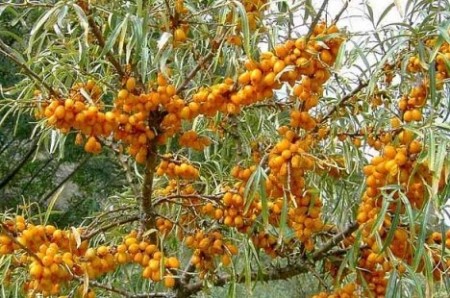
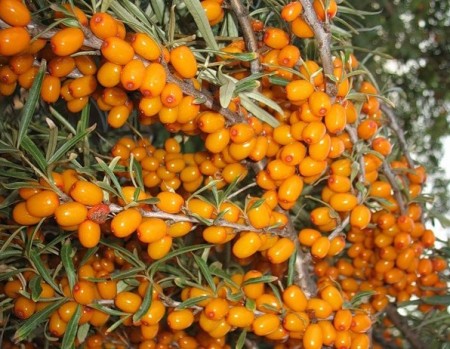
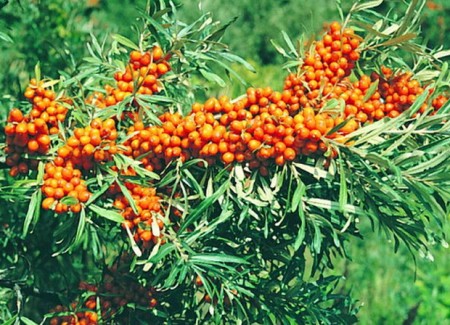
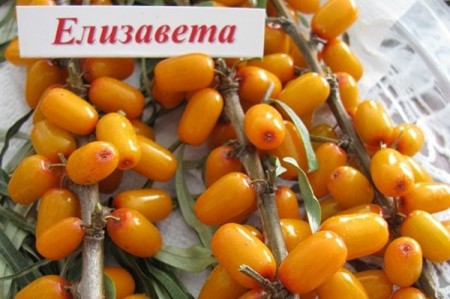
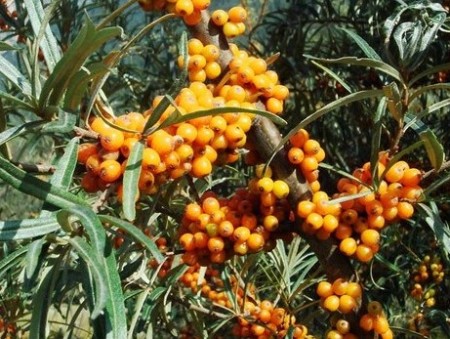
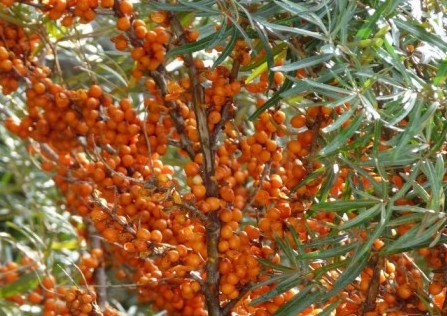
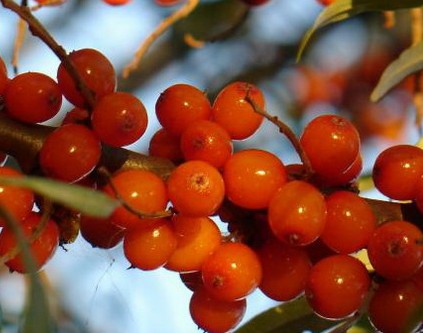
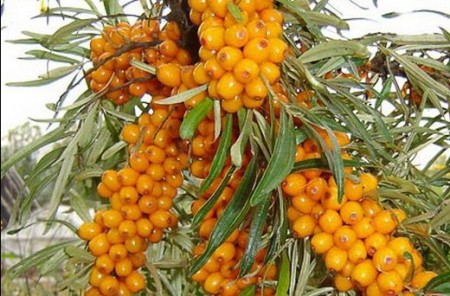
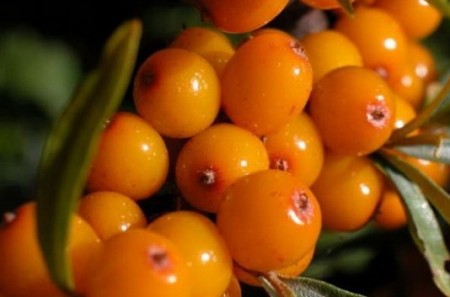
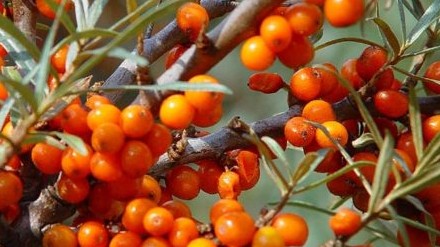
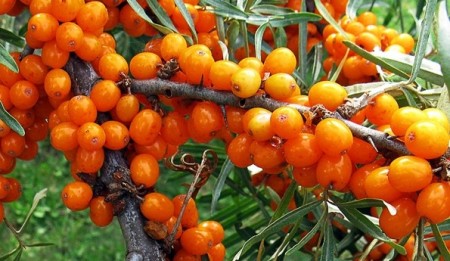
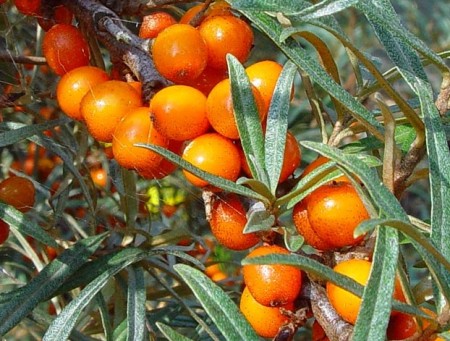
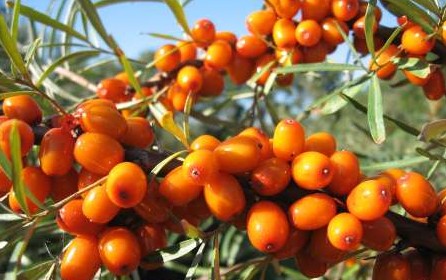
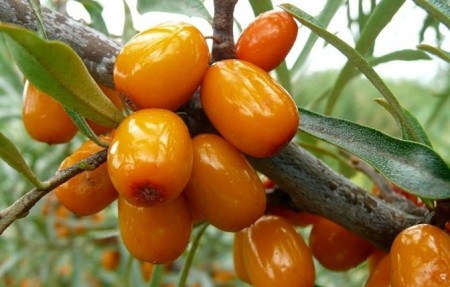
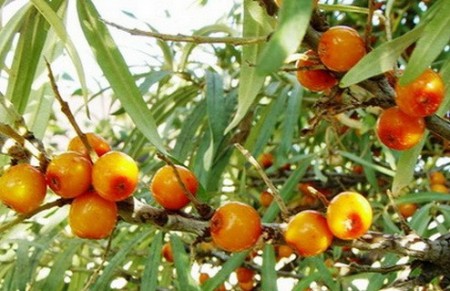
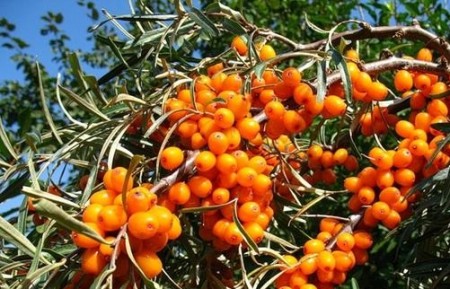
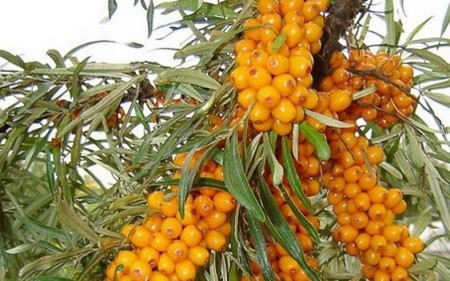
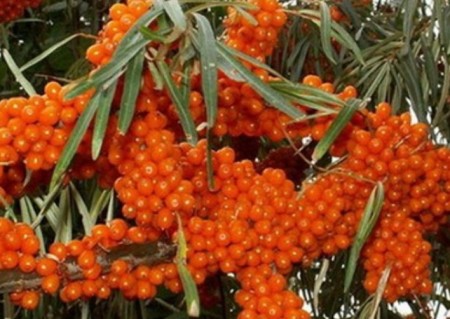
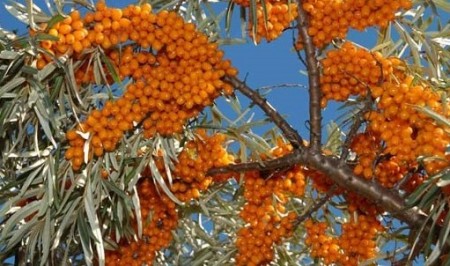
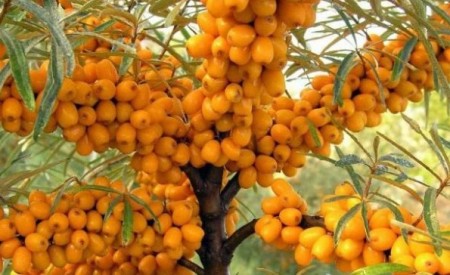
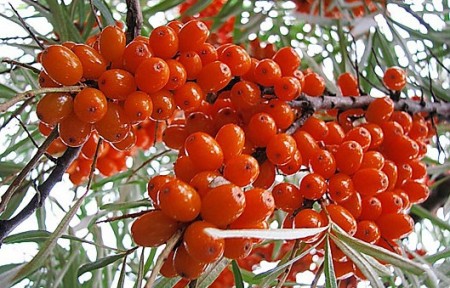
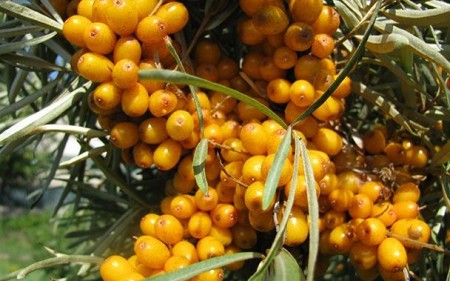
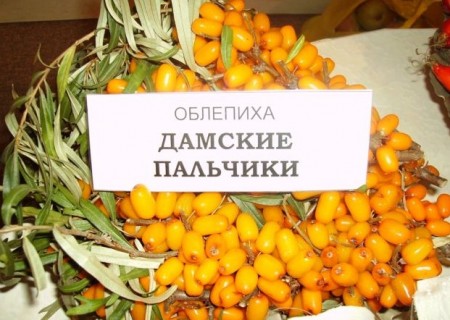


 (10 ratings, average: 3,90 out of 5)
(10 ratings, average: 3,90 out of 5) CUCUMBERS NEVER GET SICK, I'VE BEEN USING ONLY THIS FOR 40 YEARS! I SHARE A SECRET WITH YOU, CUCUMBERS ARE LIKE THE PICTURE!
CUCUMBERS NEVER GET SICK, I'VE BEEN USING ONLY THIS FOR 40 YEARS! I SHARE A SECRET WITH YOU, CUCUMBERS ARE LIKE THE PICTURE! You can dig a bucket of potatoes from each bush. Do you think these are fairy tales? Watch the video
You can dig a bucket of potatoes from each bush. Do you think these are fairy tales? Watch the video
 How our fellow gardeners work in Korea.There is a lot to learn and just fun to watch.
How our fellow gardeners work in Korea.There is a lot to learn and just fun to watch. Eye trainer. The author claims that with daily viewing, vision is restored. They don't charge money for views.
Eye trainer. The author claims that with daily viewing, vision is restored. They don't charge money for views. A 3-ingredient cake recipe in 30 minutes is better than Napoleon. Simple and very tasty.
A 3-ingredient cake recipe in 30 minutes is better than Napoleon. Simple and very tasty. Therapeutic exercises for cervical osteochondrosis. A complete set of exercises.
Therapeutic exercises for cervical osteochondrosis. A complete set of exercises. Which indoor plants match your zodiac sign?
Which indoor plants match your zodiac sign? What about them? Excursion to German dachas.
What about them? Excursion to German dachas.